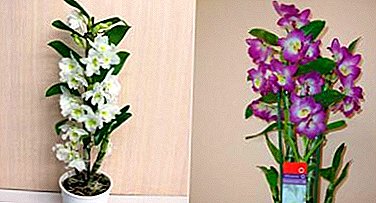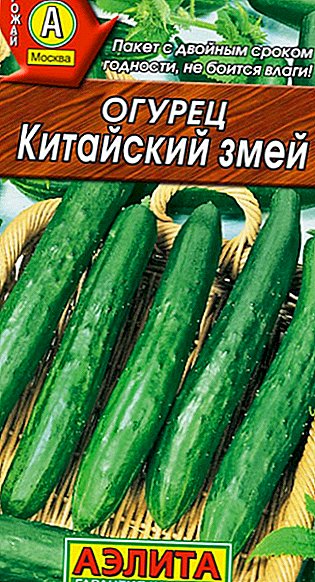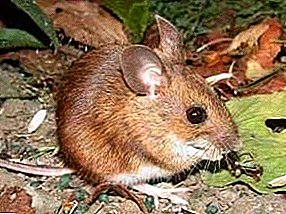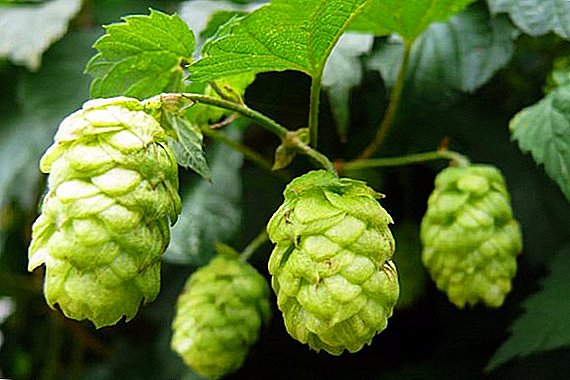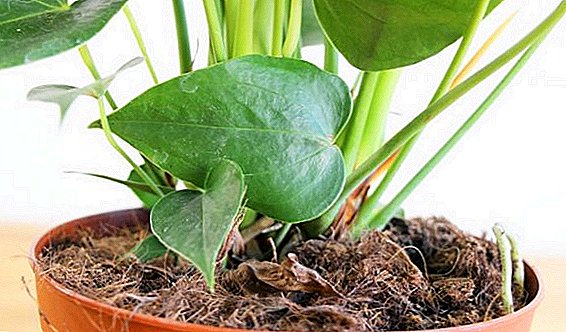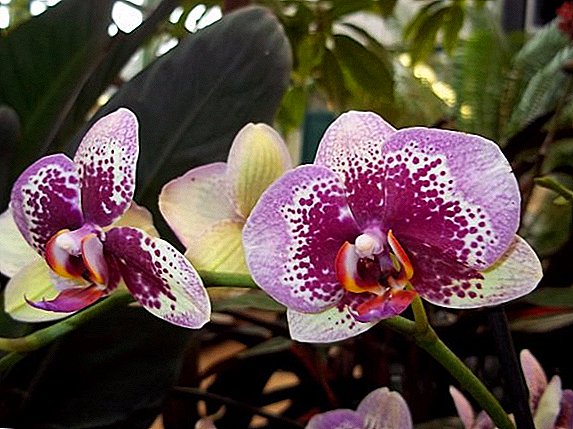 Many exotic plants today are popular with flower growers. Orchids are no exception. Having chosen the plant you like, first of all they examine the leaves, branches and peduncle, forgetting to look at the ground. Bringing home a pot with a flower, the buyer often brings orchid pests that already exist in the soil. We consider in detail these parasites and methods of combating them.
Many exotic plants today are popular with flower growers. Orchids are no exception. Having chosen the plant you like, first of all they examine the leaves, branches and peduncle, forgetting to look at the ground. Bringing home a pot with a flower, the buyer often brings orchid pests that already exist in the soil. We consider in detail these parasites and methods of combating them.
White fly
The whitefly is a small white butterfly laying its eggs on the underside of the leaf or under the bark. Butterfly larvae eat the leaves, causing damage to the plant. Spraying a plant is a waste of time: butterflies quickly flutter and it does not harm them. To get rid of them, move the leaves and slap the fluttered insects.  Methods of dealing with the remaining larvae: treat the soil with a solution of "Phyto farm" or "Aktelikt", repeat the treatment after a week. It is necessary to wash the foliage with running water for at least five days. Folk method of dealing with pest orchids - make a soap solution and wipe the entire ground part of the plant.
Methods of dealing with the remaining larvae: treat the soil with a solution of "Phyto farm" or "Aktelikt", repeat the treatment after a week. It is necessary to wash the foliage with running water for at least five days. Folk method of dealing with pest orchids - make a soap solution and wipe the entire ground part of the plant.
Important! During treatment, you must stop feeding, many drugs (especially organic) can contribute to the reproduction of insects.
Earthworms
Earthworms often crawl into pots standing on the ground in stores or greenhouses. They do not harm the plant, but they make gardeners nervous. To get rid of worms, put the pot in a deep container filled with water, so that the water covers the soil in the pot. After 7 - 10 minutes, the worms will crawl out. Repeat the bath after ten days.
Did you know? Worms are hermaphrodites; they multiply by laying eggs. In one cocoon is usually about five eggs. Newborn worms themselves provide food, freeing adults from caring for themselves.
Dummy and shield
Dummy shield and shield are frequent pest phalaenopsis. About the presence of these parasites prompt yellow or brown growths, under them sits an adult individual. Insect larvae move throughout the plant, drinking juice and hindering orchid development. To get rid of the parasite, prepare a solution "Aktellika", as indicated in the instructions, and process the plant. Re-treatment is carried out in a week. The plant needs to be transplanted into a new ground, as a preventive measure, flush both the plant and the ground with running water.  There are folk remedies to combat these pests of orchids. A method suitable for plants with dense leaves is rubbing with ethyl alcohol. Crushed garlic can wipe the damaged areas of the flower and growths, under which adults hide. The third method is a solution of olive oil with water (2 tbsp. Liters per liter of water). It should be applied to all above-ground parts of the plant with a brush for drawing.
There are folk remedies to combat these pests of orchids. A method suitable for plants with dense leaves is rubbing with ethyl alcohol. Crushed garlic can wipe the damaged areas of the flower and growths, under which adults hide. The third method is a solution of olive oil with water (2 tbsp. Liters per liter of water). It should be applied to all above-ground parts of the plant with a brush for drawing.
Ticks (spider mite and flat mite)
Flat-tick mite is a microscopic insect of red or yellow color with green larvae. You can see the insect with a magnifying glass. A parasitic flower loses white-coated leaves. If time is not detected, the peduncle buds will begin to fall off, not having time to blossom. To get rid of the insect will help spraying "Fitoferm." At a room temperature of not more than 20 ° The procedure with ° 0 should be repeated three times, once a week. If the temperature in the room is above 30 ° C - three to four times with an interval of three days. At the same time, rinse the plant and the soil with running water for five days.
 A spider mite on an orchid can live a long time, as it has the ability to develop immunity against insecticides. Therefore, getting rid of the insect, alternate preparations. To combat the pest are suitable "Actellic", "Thiofos", "Fitoferm" and "Neoron".
A spider mite on an orchid can live a long time, as it has the ability to develop immunity against insecticides. Therefore, getting rid of the insect, alternate preparations. To combat the pest are suitable "Actellic", "Thiofos", "Fitoferm" and "Neoron".
Popular method: Cyclamen tubers cut into large pieces and boil in water for forty minutes. Broth insist day, then filter and spray the plant with them. Spraying is carried out three to four times every five days. For orchids with dense leaves, wipe with medical alcohol will do. There is one subtlety: before you wipe, test the reaction of the plant in one place.
Mokritsy
As already mentioned, the orchid often suffers from pests in the soil and it is necessary to know how to get rid of them without the risk of losing the plant or re-invasion of the parasites. These pests include wood lice. This insect eats away everything that comes its way: leaves, branches, young shoots. You can learn about their appearance by noticing the holes on the plant. Water procedures will help you - put a pot with a flower in a deep basin filled with water. Water should cover the potted soil. The parasites themselves crawl out of the ground. Repeat bathing after a week. In the case of a large number of parasites and failure in water procedures, change the soil. The plant must wash the roots.
Popular method: To lure woodlice out of the ground, around the pot place the bait from pieces of raw potatoes or apples.
Mealybug
A mealybug is dangerous because it can be brought to a healthy plant even by the wind through an open window. This parasite has a strong fecundity and can very quickly populate the plant with hundreds of its own kind. The parasite draws all the nutrients from the flower, and on the wounds left, they develop fungal infections. An oblong-shaped insect has a long mustache and a white edge on the body. Let's figure out how to treat an orchid at home when attacking a worm.  Treatment consists of several stages:
Treatment consists of several stages:
- Remove all dried parts of the plant - they serve as a shelter for the parasite.
- At least twice a day, inspect and remove the detected insects, and wound the wounds with soapy water.
- Spray the soil and the lower part of the plant with the preparation "Fitoferm". After a week, repeat spraying.
- Rinse the soil and leaves of the flower under running water for five days, and the water should be warm.
Rootbird
 Rootbird - this parasite on the orchid harms the root system of the flower. The insect has a body in size from two to four centimeters, yellowish, gray or pale pink. As a result of his life, the plant fades and dies.
Rootbird - this parasite on the orchid harms the root system of the flower. The insect has a body in size from two to four centimeters, yellowish, gray or pale pink. As a result of his life, the plant fades and dies.
The infected orchid is removed from the pot, the roots are thoroughly washed and watered with a weak solution of potassium permanganate. When the root system dries, the plant is transplanted into a new soil, pre-disinfecting the pot. Old substrate must be thrown away. Another method is to tillage the soil with a dry powder insecticide. When you water an orchid, the insecticide reacts with water, saturating the roots with a chemical. The barn, eating poisoned juice, dies.
Bumbling puddles
The pods are gray or brown small insects that live in the soil and feed on the substances there. Buttocks are the most innocuous of the pests of orchids, but they also need to be plagued and treated. In a small amount, bugs feed on what they find in the soil, and after breeding, if there is a shortage of nutrients in the soil, they can switch to young root shoots.
With the appearance of blackflies, treat with the preparation "Fitoferm", referring to the instructions. Repeat the procedure after a week. For prevention, treat the place where the pot is kept with bactericidal compounds and do not allow overflows.
Nematodes
 Nematodes are small worms up to two millimeters, it is difficult to examine them immediately. With a long stay of the parasite on the orchid, the plant receives poisoning from waste products of the pest. Gradually, the orchid becomes covered with putrid touch and dies.
Nematodes are small worms up to two millimeters, it is difficult to examine them immediately. With a long stay of the parasite on the orchid, the plant receives poisoning from waste products of the pest. Gradually, the orchid becomes covered with putrid touch and dies.
Infected plants must be removed from other flowers. For treatment, dilute the tablet in a liter of water with a left-leveled tablet and pour soil over it. Repeat watering in a week. Another method - water treatments in water with a temperature of 40 degrees. Nematodes die at these rates.
Important! Water procedures in hot water should be carried out with care not to damage the plant.
Aphid
Aphid on the orchid - carrier of diseases. You can easily notice it and get rid of it immediately.
The insect, feeding on the sap of leaves, leaves behind itself a deformed tissue covered with a sticky substance. On this sticky mass, spores of a black fungus multiply with time. Treatment consists of spraying insecticides.
 You can cope with aphids with the help of popular methods. Prepare the onion brew: the ground onion is filled with boiling water and infused for seven hours. Then the infusion should be drained and sprayed the plant. Perform the procedure several times a day for four days. The second method: wash the plant with a tobacco-soap solution. You can also use the infusion of the peels of any citrus. Pour the peels (100 g) with a liter of water and leave for three days. Spray the orchid every five hours with the mixture. Dry crusts can be put on the ground around the stem of the flower.
You can cope with aphids with the help of popular methods. Prepare the onion brew: the ground onion is filled with boiling water and infused for seven hours. Then the infusion should be drained and sprayed the plant. Perform the procedure several times a day for four days. The second method: wash the plant with a tobacco-soap solution. You can also use the infusion of the peels of any citrus. Pour the peels (100 g) with a liter of water and leave for three days. Spray the orchid every five hours with the mixture. Dry crusts can be put on the ground around the stem of the flower.
Interesting! Aphids are popularly known as ant cows. Ants collect "herds" of insects, protecting them from insect-eating and "milking" their cows, massaging their abdomen with mustaches. Aphids recycle plant nutrients and excrete them with sugar during a “massage”, directly into the mouth of ants.
Thrips
Thrips are invisible because of their small size - just over 2 mm. The parasite destroys not only the foliage, but also the roots of the orchid. Thrips lay their offspring in orchid leaves, hatched larvae from eggs, feed on the juice of the latter. Black spots appear on flowers, the foliage dries, and growths form on the roots. If time does not get rid of the pest, the plant will die.
 To get rid of thrips, you need to spray the flower "Aktellik" or "Fitoverm" three times. The interval between spraying ten days. If you do not want to use chemicals, spray onion extract, or a solution of olive oil and water.
To get rid of thrips, you need to spray the flower "Aktellik" or "Fitoverm" three times. The interval between spraying ten days. If you do not want to use chemicals, spray onion extract, or a solution of olive oil and water.
Slugs and snails
Slugs and snails are especially dangerous for plants, as they eat up all the juicy parts of an orchid. These parasites love heat and moisture, and often you bring them along with the store you buy in the store. In the case of snails and slugs need careful cleaning. For pests put bait: slices of apple or cucumber. When the invertebrate creeps out, it is harvested by hand. The collection procedure must be repeated until complete disappearance. Snails can leave offspring that appear after three weeks, so make a control bait.
So you bought an orchid. Do not rush to transplant it and put on a permanent place. Make her a water bath: put the pot in a container filled with water so that the soil in the pot is under water. You will see whether the pests have been brought with you or not. If brought, immediately treat the flower, let it dry and plant in a properly selected soil. For orchids, phalaenopsis is a soil containing bark and moss. In such a ground, the orchid will feel as if it were in natural conditions, because in nature the flower grows on tree trunks or peeled stumps.


